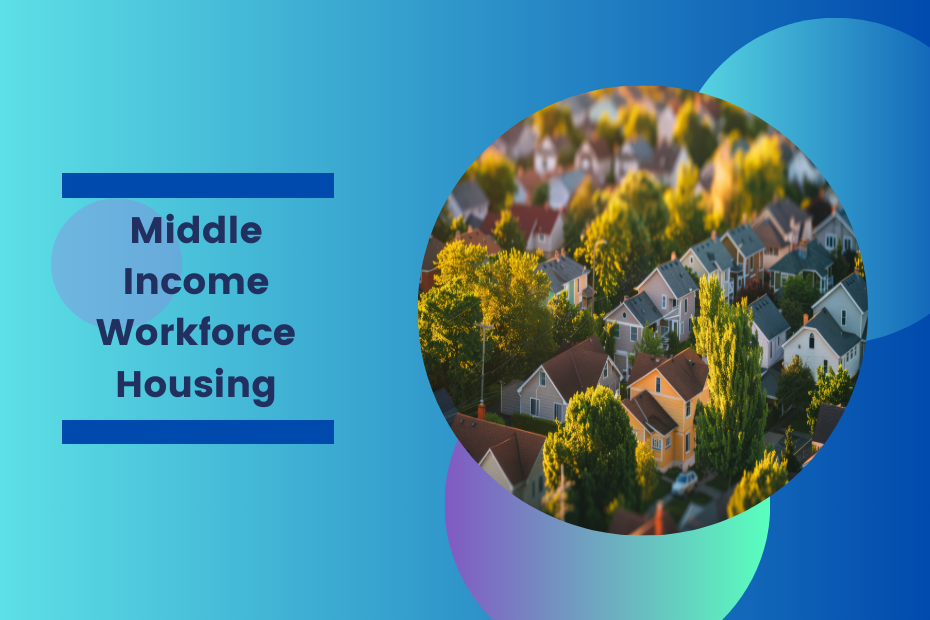Design innovations in middle-income workforce housing are transforming the landscape of housing development, offering sustainable and affordable solutions for working families. These innovations are crucial in addressing the growing housing crisis faced by middle-income earners, who often fall between the gaps of low-income housing assistance and market-rate housing affordability. This article explores various design and financial innovations in workforce housing, focusing on strategies that are making a significant impact in 2024. By understanding these innovations, stakeholders can better navigate the challenges and opportunities in providing quality housing for middle-income families.
Modular Construction Techniques
One of the most promising innovations in workforce housing is the use of modular construction techniques. This approach involves prefabricating building sections in a factory setting and then assembling them on-site. Modular construction can significantly reduce the time and cost of building new homes. By streamlining the construction process and minimizing on-site disruptions, modular construction allows for faster project completion and lower labor costs. Companies like HumanKind Homes are pioneering this method, utilizing sustainable materials and advanced manufacturing processes to deliver high-quality, affordable housing units.
Modular construction is particularly beneficial in urban areas where space is limited and traditional construction methods can be disruptive and time-consuming. The ability to control the building environment in a factory setting ensures higher quality and consistency in the final product. Furthermore, modular construction can reduce waste and improve energy efficiency, contributing to the overall sustainability of housing developments.
Community Land Trusts
Community land trusts (CLTs) are emerging as a powerful tool for creating affordable workforce housing. A CLT is a nonprofit organization that acquires and holds land to ensure long-term affordability for housing. The land is leased to homeowners under long-term, renewable leases, while the trust retains ownership of the land. This model helps keep housing costs down and provides stability for middle-income families. RootedHomes in Oregon is an example of a CLT that builds net-zero energy homes, reducing utility costs and promoting environmental sustainability. This model ensures that housing remains affordable across generations, supporting community resilience and economic stability.
CLTs also empower communities by allowing them to have a say in the development and management of housing projects. This participatory approach can enhance community cohesion and ensure that the housing meets the specific needs of the residents. By separating the ownership of land and buildings, CLTs protect against speculative real estate markets and ensure that housing remains accessible to those who need it most.
Innovative Financing Solutions
Financing innovations are crucial in making workforce housing projects feasible. Traditional financing methods often fall short in addressing the unique needs of middle-income housing. Innovative approaches, such as the use of blockchain technology by Alphaledger, are revolutionizing access to capital. Alphaledger’s platform connects borrowers directly with lenders, reducing borrowing costs and expediting project funding. This transparency and efficiency in the financing process can attract more investment into workforce housing projects, making them more viable and scalable.
Other innovative financing solutions include social impact bonds and community investment funds. These mechanisms allow investors to fund housing projects while achieving social impact goals. By aligning financial returns with social outcomes, these models can attract a broader range of investors, including those interested in sustainable and ethical investment opportunities. Public-private partnerships (PPPs) also play a critical role in financing, combining public resources with private sector efficiency and capital to deliver housing projects.
Mixed-Use Developments
Mixed-use developments are another innovative strategy in workforce housing. These projects combine residential units with commercial, retail, and community spaces, creating vibrant, integrated communities. Mixed-use developments can enhance the quality of life for residents by providing convenient access to amenities and reducing commuting times. This holistic approach supports the economic vitality of neighborhoods and fosters a sense of community. Projects like those supported by Edlen & Co. in Yamhill County, Oregon, illustrate the benefits of integrating affordable housing with broader community development goals.
Mixed-use developments also support local economies by creating job opportunities and attracting businesses. By integrating different uses within a single development, these projects can reduce the need for transportation and encourage more sustainable lifestyles. The incorporation of green spaces, community centers, and public services further enhances the livability and sustainability of these developments.
Sustainable Design Practices
Sustainable design is at the forefront of innovations in workforce housing. Incorporating energy-efficient systems, green building materials, and environmentally friendly practices not only reduces the environmental impact but also lowers operating costs for residents. Net-zero homes, which produce as much energy as they consume, are becoming more prevalent. These homes utilize solar panels, advanced insulation, and energy-efficient appliances to minimize utility costs. Sustainable design enhances the long-term affordability and livability of workforce housing, ensuring that it meets the needs of residents while contributing to environmental conservation.
Examples of sustainable design practices include the use of reclaimed materials, rainwater harvesting systems, and passive solar design. These features not only improve the environmental performance of homes but also create healthier living environments for residents. By prioritizing sustainability, developers can contribute to broader goals of reducing carbon footprints and promoting resilience against climate change.
Public-Private Partnerships
Effective public-private partnerships (PPPs) are essential in advancing workforce housing projects. These collaborations leverage the strengths of both sectors to overcome financial and logistical barriers. Government entities can provide subsidies, tax incentives, and regulatory support, while private developers bring expertise, efficiency, and capital. Successful PPPs, like those initiated by the Missing Middle Housing Fund, demonstrate how coordinated efforts can amplify resources and achieve greater impact. These partnerships are vital in addressing the housing shortages and ensuring that middle-income families have access to affordable, quality housing.
PPPs also encourage innovation by bringing together diverse perspectives and expertise. By collaborating on project design, financing, and implementation, public and private partners can develop more effective and efficient housing solutions. These partnerships also enable the sharing of risks and rewards, making it easier to undertake large-scale projects that might be challenging for individual entities.
Adaptive Reuse of Existing Structures
Adaptive reuse involves repurposing existing buildings for new housing developments. This approach can be more cost-effective and sustainable than new construction, as it utilizes existing infrastructure and reduces material waste. Adaptive reuse projects can transform underutilized commercial buildings, factories, or schools into vibrant residential communities. These projects often preserve the historical and cultural significance of buildings while providing modern, affordable housing solutions. By reimagining existing spaces, adaptive reuse contributes to urban renewal and addresses housing shortages in innovative ways.
Adaptive reuse projects can also enhance the character and identity of neighborhoods. By retaining architectural features and integrating them into new developments, these projects can create unique and desirable living environments. Additionally, adaptive reuse can expedite the development process, as it often involves fewer regulatory hurdles and can capitalize on existing utilities and infrastructure.
In conclusion, design innovations in middle-income workforce housing are essential in addressing the housing crisis and providing sustainable, affordable solutions for working families. By leveraging modular construction, community land trusts, innovative financing, mixed-use developments, sustainable design, public-private partnerships, and adaptive reuse, stakeholders can create housing that meets the needs of middle-income earners. These strategies not only enhance the affordability and quality of housing but also contribute to the overall economic and social vitality of communities. As we move forward, continued innovation and collaboration will be key to solving the complex challenges of workforce housing.

Thomas J. Powell is the Senior Advisor at Brehon Strategies, a seasoned entrepreneur and a private equity expert. With a career in banking and finance that began in 1988 in Silicon Valley, he boasts over three and a half decades of robust experience in the industry. Powell holds dual citizenship in the European Union and the United States, allowing him to navigate international business environments with ease. A Doctor of Law and Policy student at Northeastern University, he focuses on middle-income workforce housing shortages in rural resort communities. He blends his professional acumen with a strong commitment to community service, having been associated with the Boys and Girls Clubs of America for over 45 years. Follow Thomas J Powell on LinkedIn, Twitter,Crunchbase.

